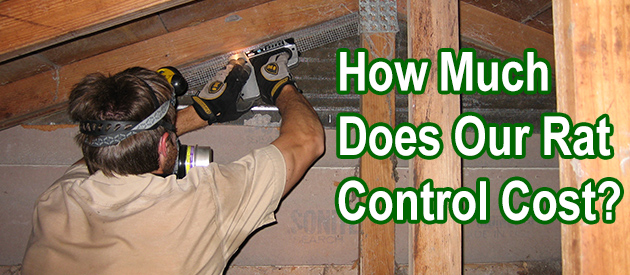King County, Seattle Rat Control Situation:
I have been living in my apartment for a year now, and while it is a consistent day to day problem, rats running around the attic and climbing through the walls has been a problem throughout this year. I have asked my landlord for help, and unfortunately received nothing. So my question to you is, how can I, an average college student, find affordble resources to keep the raccoons out of my home? Thanks, Chris
IMaybe call the department of health citing the risks of rat disease or inform your landlord that the rats are likely to severely damage his property and maybe he'll get off his cheap ass and do something about it.
Thank you for the tips, I've already talked to my landlord about the possible (at and this point likely) damage, but I will definitely look into the department of health. Huge Thanks Chris
have been dealing with a rodent in my attic, wall, floor, ceiling for two years. I've paid over $600.00 to eliminate em pest control and they can't find out how the rodent is getting in. I'm at the point of giving up my house because I don't know what it is. It move periodically in the day time and a couple of other times thought out the day. Help I'm desperate. have one rat in attic that enters through vent,and sits on shelf area behind vent.have heard it in this area,and have sprayed what i had on hand some wasp killing spray which reaches the are from the ground. set a trap at base of house where this varmit climbs up to get to the vent. for the last few days i have not heard the rat or seen it? could it be that it left,or is it quiet because of babies.this is not the time of the year for babies which is around july or aug and in the winter right?
Hi David: I think you have a great site and have found it very helpful. I have rats coming into my house and had someone come out to look at it today and they pointed out several areas where rats are coming into the house. There is access through the AC vent, a few weepholes and possibly the mushroom vent on top of the house. They quoted $1,200 -1,400 to do that work to seal off the house and do the trapping. Does that sound reasonable? Do you have any companies in Seattle that you recommend. I have no doubt that the exclusion work sealing off the house is the way to go for a permanent solution, but that price sounds a bit high to me.
Seattle Rat Control Tip of The Week
What To Do With A Rat After It Is Caught
After successfully catching a rat, people are often faced with the issue of what to do next. There is more to removing rats in your home than just catching it. If you have caught a rat in your home, there are certain things you will have to consider before going ahead with any activity.
The first thing you will have to consider if you caught a live rat is whether to relocate the rat to somewhere far away from your home or kill it. Secondly, you will have to figure out the best way to handle the rat without having any close contact with it, so as not to put your health at risk. Lastly, you will have to make plans on how to thoroughly disinfect your home.
If you are sensitive to animals, the best way to handle this situation is to choose the humane way by relocating the rat somewhere far away from your home after catching it. But at the same time, you need to understand the fact that the rat might not survive in the new environment you intend to introduce it to. Rats are habitual and are usually accustomed to living in the environment they grow up in. When you relocate any rat you caught, it will find it difficult to feed in the new environment. In most cases, these rats don't usually survive more than a few days.
On the other hand, if you have decided to kill the rat after trapping it, it is best to kill it fast and quickly. The best way to do this is to use either a blunt object that is firm and heavy or use a fire weapon.
While doing all of these, you need to protect yourself as much as you can to avoid getting in contact with diseases and pathogens. To do this, wear a pair of gloves while handling the rat and dispose of them immediately after use.


